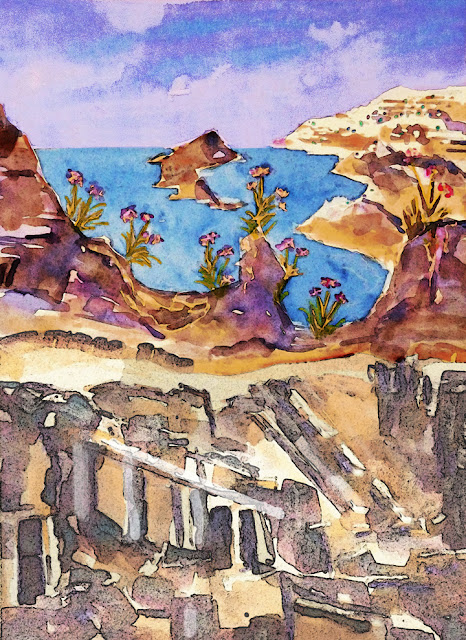Diptych
in the fourth dimension
Watercolour
and crayon
©2013
Charlene Brown
This is the beginning of one of
the projects in my ‘Plan for 2021’ –
Creative
archaeology: reinterpreting some of the photos and sketches I accumulated in
past archaeology-related travel with the University of Victoria travel study
program.
I’ll be painting some new
pictures, and recycling some old ones, such as ‘Diptych in the fourth dimension’
using one of my favourite sketching techniques: Drawing
with crayons as a resist before painting with watercolour. I’m going to call this series ‘Time travel
with a bag of crayons’ because there are usually at least two different time
periods combined in each picture.
If you’re interested in the detail of this
diptych – The right panel is based on a photograph I took on a UVic trip to Egypt
in 2008. It shows a relief sculpture (reassembled from
shards) on a wall in Hatshepsut’s temple at Deir el-Bahri, across
the river from Luxor. The mural illustrates an expedition to the Land of
Punt, an exotic country on the Red Sea coast in what is now Northern Sudan. Because
I think any picture of the Upper Nile has to include the pyramids of the Black
Pharaohs, they are shown on the left side. They are smaller, more sharply
pointed and far more numerous than the more famous pyramids near Cairo. The
fact they were built in about the 5th century BCE nine hundred years
after the gardens of Punt were sculpted at Deir el-Bahri in the 14th
century BCE, and are near the Nile, rather than the Red Sea, stopped me
briefly… until I thought of presenting
the time/space divide as a diptych.












